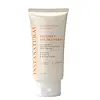What's inside
What's inside
 Key Ingredients
Key Ingredients

 Benefits
Benefits

 Concerns
Concerns

 Ingredients Side-by-side
Ingredients Side-by-side

Ethylhexyl Salicylate 5%
UV AbsorberOctocrylene 5%
UV AbsorberHomosalate 10%
Skin ConditioningButyl Methoxydibenzoylmethane 3%
UV AbsorberAcrylates/C10-30 Alkyl Acrylate Crosspolymer
Emulsion StabilisingAloe Barbadensis Extract
Skin ConditioningAloe Barbadensis Leaf Juice
Skin ConditioningC12-15 Alkyl Benzoate
AntimicrobialCamellia Sinensis Leaf Extract
AntimicrobialCarbomer
Emulsion StabilisingCentella Asiatica Leaf Extract
Skin ConditioningDisodium EDTA
Ethylhexylglycerin
Skin ConditioningParfum
MaskingGlycerin
HumectantHibiscus Rosa-Sinensis Flower Extract
HumectantHydroxypropyl Methylcellulose
Emulsion StabilisingPhenoxyethanol
PreservativePolyethylene
AbrasivePolysorbate 20
EmulsifyingPropylene Glycol
HumectantRosmarinus Officinalis Leaf Extract
AntimicrobialSodium Ascorbyl Phosphate
AntioxidantSodium Hydroxide
BufferingSorbitan Oleate
EmulsifyingTheobroma Cacao Seed Butter
EmollientTocopheryl Acetate
AntioxidantWater
Skin ConditioningEthylhexyl Salicylate 5%, Octocrylene 5%, Homosalate 10%, Butyl Methoxydibenzoylmethane 3%, Acrylates/C10-30 Alkyl Acrylate Crosspolymer, Aloe Barbadensis Extract, Aloe Barbadensis Leaf Juice, C12-15 Alkyl Benzoate, Camellia Sinensis Leaf Extract, Carbomer, Centella Asiatica Leaf Extract, Disodium EDTA, Ethylhexylglycerin, Parfum, Glycerin, Hibiscus Rosa-Sinensis Flower Extract, Hydroxypropyl Methylcellulose, Phenoxyethanol, Polyethylene, Polysorbate 20, Propylene Glycol, Rosmarinus Officinalis Leaf Extract, Sodium Ascorbyl Phosphate, Sodium Hydroxide, Sorbitan Oleate, Theobroma Cacao Seed Butter, Tocopheryl Acetate, Water
Water
Skin ConditioningIsopropyl Palmitate
EmollientCarthamus Tinctorius Seed Oil
MaskingGlycerin
HumectantCetyl Alcohol
EmollientDimethicone
EmollientCetearyl Olivate
Butyrospermum Parkii Butter
Skin ConditioningSorbitan Olivate
EmulsifyingTridecyl Stearate
EmollientNeopentyl Glycol Dicaprylate/Dicaprate
EmollientAllantoin
Skin ConditioningRetinol
Skin ConditioningCellulose Acetate Butyrate
Linoleic Acid
CleansingPhospholipids
Skin ConditioningPhytosterols
Skin ConditioningSodium Hyaluronate
HumectantXanthan Gum
EmulsifyingTridecyl Trimellitate
EmollientCaprylic/Capric Triglyceride
MaskingTetrasodium Glutamate Diacetate
Tricaprylin
MaskingSodium PCA
HumectantPentaerythrityl Tetra-Di-T-Butyl Hydroxyhydrocinnamate
AntioxidantSilica Silylate
EmollientSilica
AbrasiveMagnesium Stearate
Cosmetic ColorantSodium Hydroxide
BufferingSodium Benzoate
MaskingCitric Acid
BufferingEthylhexylglycerin
Skin ConditioningPhenoxyethanol
PreservativeWater, Isopropyl Palmitate, Carthamus Tinctorius Seed Oil, Glycerin, Cetyl Alcohol, Dimethicone, Cetearyl Olivate, Butyrospermum Parkii Butter, Sorbitan Olivate, Tridecyl Stearate, Neopentyl Glycol Dicaprylate/Dicaprate, Allantoin, Retinol, Cellulose Acetate Butyrate, Linoleic Acid, Phospholipids, Phytosterols, Sodium Hyaluronate, Xanthan Gum, Tridecyl Trimellitate, Caprylic/Capric Triglyceride, Tetrasodium Glutamate Diacetate, Tricaprylin, Sodium PCA, Pentaerythrityl Tetra-Di-T-Butyl Hydroxyhydrocinnamate, Silica Silylate, Silica, Magnesium Stearate, Sodium Hydroxide, Sodium Benzoate, Citric Acid, Ethylhexylglycerin, Phenoxyethanol
Ingredients Explained
These ingredients are found in both products.
Ingredients higher up in an ingredient list are typically present in a larger amount.
Ethylhexylglycerin (we can't pronounce this either) is commonly used as a preservative and skin softener. It is derived from glyceryl.
You might see Ethylhexylglycerin often paired with other preservatives such as phenoxyethanol. Ethylhexylglycerin has been found to increase the effectiveness of these other preservatives.
Glycerin is already naturally found in your skin. It helps moisturize and protect your skin.
A study from 2016 found glycerin to be more effective as a humectant than AHAs and hyaluronic acid.
As a humectant, it helps the skin stay hydrated by pulling moisture to your skin. The low molecular weight of glycerin allows it to pull moisture into the deeper layers of your skin.
Hydrated skin improves your skin barrier; Your skin barrier helps protect against irritants and bacteria.
Glycerin has also been found to have antimicrobial and antiviral properties. Due to these properties, glycerin is often used in wound and burn treatments.
In cosmetics, glycerin is usually derived from plants such as soybean or palm. However, it can also be sourced from animals, such as tallow or animal fat.
This ingredient is organic, colorless, odorless, and non-toxic.
Glycerin is the name for this ingredient in American English. British English uses Glycerol/Glycerine.
Learn more about GlycerinPhenoxyethanol is a preservative that has germicide, antimicrobial, and aromatic properties. Studies show that phenoxyethanol can prevent microbial growth. By itself, it has a scent that is similar to that of a rose.
It's often used in formulations along with Caprylyl Glycol to preserve the shelf life of products.
Sodium Hydroxide is also known as lye or caustic soda. It is used to adjust the pH of products; many ingredients require a specific pH to be effective.
In small amounts, sodium hydroxide is considered safe to use. However, large amounts may cause chemical burns due to its high alkaline.
Your skin has a natural pH and acid mantle. This acid mantle helps prevent harmful bacteria from breaking through. The acid mantle also helps keep your skin hydrated.
"Alkaline" refers to a high pH level. A low pH level would be considered acidic.
Learn more about Sodium HydroxideWater. It's the most common cosmetic ingredient of all. You'll usually see it at the top of ingredient lists, meaning that it makes up the largest part of the product.
So why is it so popular? Water most often acts as a solvent - this means that it helps dissolve other ingredients into the formulation.
You'll also recognize water as that liquid we all need to stay alive. If you see this, drink a glass of water. Stay hydrated!
Learn more about Water